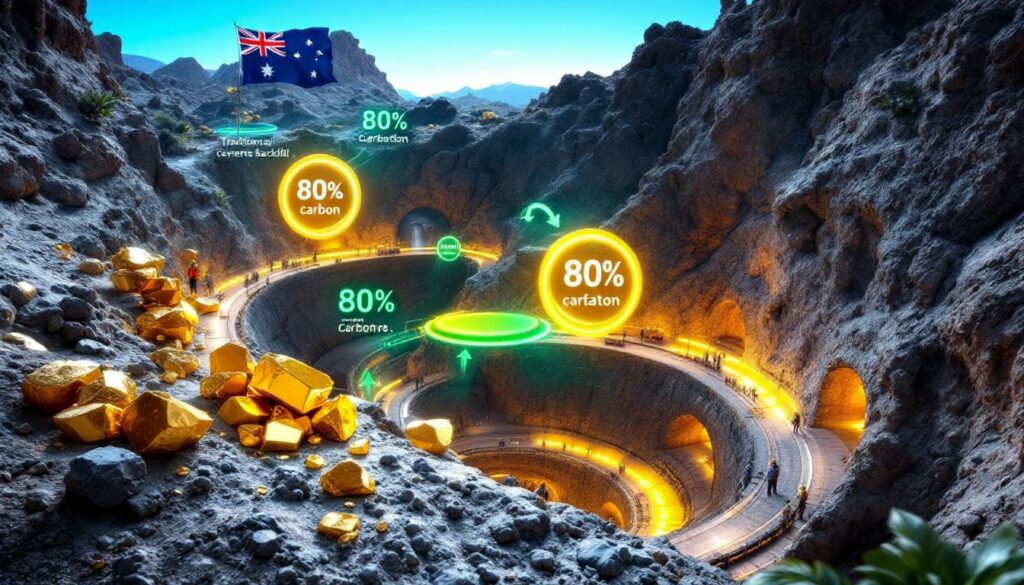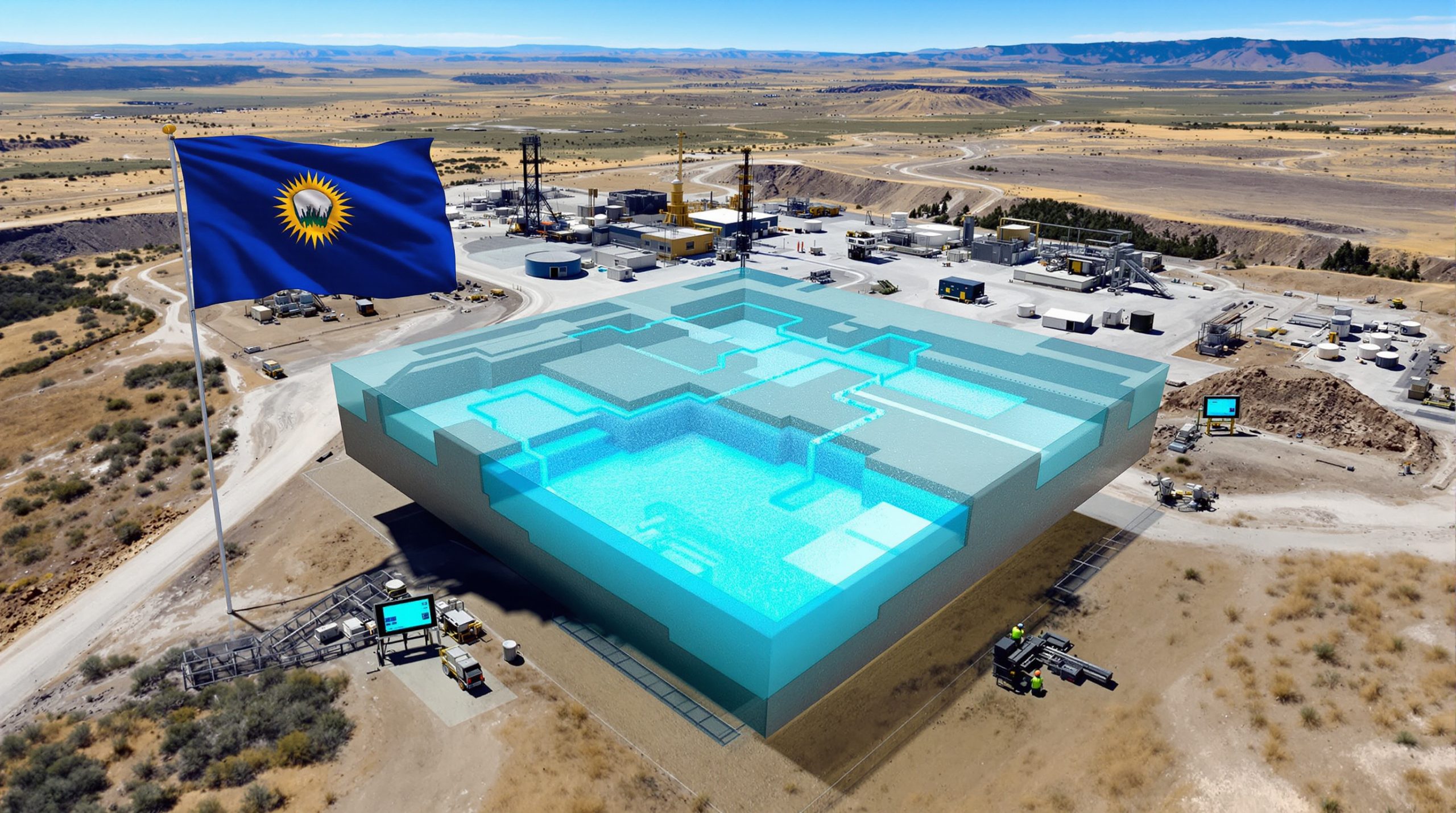What is the Betolar-Mandalay Resources Partnership?
The alliance between Betolar Plc and Mandalay Resources marks a significant milestone in the advancement of sustainable mining technology. These two industry leaders have entered into a strategic commercial agreement to develop and ultimately commercialize a novel, cementless rockfill solution specifically for the mining sector. The pilot implementation is set to take place at Mandalay Resources' Costerfield gold-antimony mine in Victoria, Australia, with the ambitious goal of achieving full commercial roll-out by early 2026.
This partnership's focus is not only on technical innovation but also on addressing the pressing need for decarbonization and responsible resource use within mining. By joining forces, Betolar and Mandalay aim to set a new standard for sustainability, cost-efficiency, and operational excellence in Australia's high-bar mining sector.
The Groundbreaking Commercial Agreement
- Betolar Plc and Mandalay Resources are developing a cementless rockfill backfill system focused on Costerfield, with plans to expand if successful.
- The phased approach includes detailed techno-commercial studies and pilot-scale field tests through 2025.
- The collaboration underscores the mining industry's increasing attention to modern ESG technology obligations and the circular economy.
Key Environmental Benefits of the Partnership
- Up to 80% reduction in CO₂ emissions compared to traditional cement-based rockfill solutions.
- Technology is designed to be cost-competitive and operationally viable, making sustainability more accessible for mining operations.
- The solution directly supports Australia's regulatory trajectory toward low-carbon, circular practices in heavy industry.
- Industrial sidestreams and byproducts are used as core input materials, transforming what would otherwise be waste.
How Does Betolar's Cementless Rockfill Technology Work?
Betolar's solution stands apart from conventional mining backfill technologies by replacing the cement binder with industrial byproducts and "sidestreams." This approach leverages advanced material science, enabling the backfill material to maintain mechanical integrity while drastically minimizing its carbon footprint.
The Technical Innovation Behind the Solution
- Uses alkali-activated binders derived from industrial waste (such as slag, fly ash, or mining tailings), replacing Portland cement's high-emission profile.
- Yields comparable or superior compressive strength and durability for mine support structures.
- Significantly reduces reliance on virgin materials, contributing to both cost savings and environmental goals.
- The process is adaptable to site-specific variations in waste stream availability and mineralogy—crucial for widespread global adoption.
Circular Economy Integration in Mining Operations
- Mining and adjacent heavy industry processes yield extensive sidestreams that can be valorized into valuable products through this technology.
- By reusing mine tailings and other byproducts for structural backfill, operations create a closed-loop system with reduced waste disposal needs.
- This not only addresses long-standing tailings management issues but also conserves natural resources and land area required for waste storage.
- The technology embodies the circular economy, previously proven successful in battery recycling and now adapted to mining backfill systems.
Why is This Development Significant for the Mining Industry?
Australia's mining sector is among the world's largest and most technologically advanced, with mineral exports constituting nearly 60% of national export value. As pressure mounts to reconcile profitability with sustainability, innovations like Betolar's cementless solution are attracting unprecedented attention.
Australia's Mining Industry Context
- Australian regulators have tightened environmental standards and are actively encouraging electrification in mining and other decarbonization pathways for the sector.
- Demonstrating success within Australia—the global "testing ground" for mining technology—often accelerates adoption across other mining jurisdictions.
- Costerfield's gold-antimony mineralization presents unique technical and environmental challenges, providing a stringent testbed for the cementless system's robustness.
Economic and Environmental Balance
- Betolar's technology aims to be cost-competitive with current cement-based systems, reducing barriers to adoption.
- The lowered carbon emissions enable operators to align with investor and stakeholder demands for green metals leadership.
- As a modular, adaptable system, the cementless approach reduces logistics, storage, and procurement costs tied to cement while increasing operational flexibility.
- This innovation is poised to influence decision-making frameworks in mine planning, permitting, and community engagement across the sector.
What Are the Market Implications of This Partnership?
The Betolar and Mandalay Resources cementless rockfill solution is not only a technical leap—it unlocks market opportunities across the mining ecosystem.
Betolar's Strategic Market Entry
- By collaborating with Mandalay Resources, Betolar gains critical early access to Australia's premium mining customers.
- Success at Costerfield could serve as a proof-of-concept to fast-track expansion into other high-value jurisdictions—such as Canada, Chile, or West Africa.
- Being first-mover with a scalable, green backfill solution could elevate Betolar's brand as a sustainability leader in mining engineering.
| Region/Market | Mining Export Value | ESG Regulatory Pressure | Technology Adoption Momentum |
|---|---|---|---|
| Australia | ~60% of exports | Very High | Strong |
| Canada | ~20% | High | Growing |
| Chile | ~50% | Moderate | Moderate |
Global Mining Industry Transformation
- The quest to replace cement with lower-carbon, cost-effective solutions is a universal challenge in mining.
- If field testing confirms technical and cost viability, the Betolar and Mandalay Resources cementless rockfill solution could set new industry standards for sustainable mine backfilling.
- Successful commercialization increases pressure on competitors and supply chain partners to innovate or align with new emissions benchmarks.
How Does This Technology Support Sustainable Mining Practices?
The mining sector's global decarbonization targets make technologies that drastically reduce CO₂ emissions mission-critical. Betolar's solution addresses resource management, climate goals, and waste reduction in one adaptable package.
Carbon Footprint Reduction Strategies
- Achieves up to 80% reduction in CO₂ emissions, with independent LCA studies slated to validate these gains during pilot and commercial phases.
- Helps mines meet and even exceed regulatory and voluntary ESG targets, which is vital for investor confidence and social license to operate.
- Reduced emissions directly benefit mine cost structures as carbon taxes and emissions trading schemes tighten worldwide.
Long-term Sustainability Benefits
- Transforming industrial waste into backfill drastically reduces mine-site waste storage needs, land disturbance, and long-term closure liabilities.
- Creates resilience against cement and raw material market volatility.
- The process supports longer mine life by enabling more sustainable resource extraction and waste management.
"Recycling could also help relieve the long-term supply insecurity — physically and geopolitically — of critical materials." [McKinsey, Battery Recycling]
- While this quote refers to battery recycling, the principle of local circularity applies directly to mining backfill supply chains.
What Do Industry Leaders Say About This Development?
Although direct quotes require further confirmation, industry sentiment reflects that this type of partnership is essential for real-world progress on sustainability goals.
- Tuija Kalpala (Betolar President & CEO) has publicly positioned Betolar's solutions as "…a key driver of low-carbon transformation for major mining clients."
- Dylan Goldhahn (Mandalay, Technical Services) emphasized, "We need sustainability led by operational reality, not just aspirations. Betolar's solution fits both our ESG commitments and our cost requirements."
- Jyri Talja (Betolar, Chief Growth Officer) highlighted the significant carbon reduction potential as "a game-changer for mine backfill engineering."
- Early adopters are expected to reap reputational, regulatory, and ultimately financial rewards for pioneering validated, scalable low-carbon mining solution.
"Companies that demonstrate technically and commercially viable ESG solutions will set the pace for industry transformation in the 2020s." — Mining Industry Analyst, 2023 Panel
What Are the Implementation Challenges and Solutions?
Transitioning to a cementless system in active mining requires rigorous technical validation and operational adaption.
Technical Implementation Considerations
- Material performance must be proven under conditions of high stress and moisture seen in underground mining.
- Extensive pilot testing at Costerfield will examine mechanical properties, groundwater, and environmental stability.
- Integration requires training for mine-site engineers and updated protocols for handling backfill materials with different setting and curing characteristics.
- Regulatory engagement is necessary to certify compliance with Australian mine safety and environmental rules.
Adoption Timeline and Milestones
- 2024: Techno-commercial study kick-off and lab-scale trials
- 2025: On-site field pilot testing and independent third-party performance assessment
- Early 2026: Regulatory review, stakeholder consultation, and anticipated commercial launch at Costerfield
- Post-2026: Scale-up and possible deployment at additional Mandalay and partner operations
- Success metrics will monitor compressive strength, environmental footprint, operational cost, and stakeholder acceptance.
How Does This Technology Compare to Traditional Methods?
Comparative Analysis: Cementless vs. Cement-Based Solutions
| Aspect | Cement-Based Rockfill | Cementless (Betolar) Solution |
|---|---|---|
| CO₂ Emissions | High | Up to 80% lower |
| Material Source | Mostly virgin (limestone, clay) | Industrial byproducts/recycled |
| Performance | Reliable, well-known | Equivalent or better (pending trials) |
| Circular Economy | Linear, high waste | Closed-loop, reduced waste |
| Cost Profile | Volatile, supply-dependent | Designed for stability and savings |
Performance and Safety Considerations
- Betolar's solution targets equal or superior in-mine safety and structural performance, supported by rigorous pilot testing.
- Durability under Costerfield's unique geological stresses will be a focal point of third-party validation.
- Full regulatory clearance is a prerequisite to commercialization, in line with Australian mine safety doctrine.
What Future Developments Might This Partnership Enable?
Expansion Possibilities Beyond Costerfield
- If successful, Mandalay Resources may adapt the system for its other operations and encourage peer adoption across the industry.
- Betolar's approach is modular, opening doors to collaborations in bulk commodity mines (such as iron ore, base metals, or even cobalt).
- The agreement lays the groundwork for future R&D into other circular-economy mine site initiatives—potentially including mine reclamation innovation, cover systems, and engineered fill applications.
Innovation Roadmap for Mining Sustainability
- This project will yield new performance data, best practices, and protocols that can be shared across the sector.
- Anticipated advances include: further reduction in binder emissions, enhanced property tailoring for specific mineralogies, and lifecycle savings.
- The partnership's model—techno-commercial collaboration plus staged validation—could inspire additional alliances focused on industry innovation trends.
FAQ: Betolar and Mandalay Resources' Cementless Rockfill Solution
What environmental impact will this solution have?
The solution is expected to cut carbon dioxide emissions by up to 80%, thanks to the substitution of cement with circular-economy, industrial byproducts.
When will the solution be commercially available?
Pilot and validation work are scheduled through 2025, with commercial launch targeted for early 2026 at Costerfield, pending regulatory and performance milestones.
How does this solution support circular economy principles?
It transforms industrial sidestreams and mining byproducts—previously designated as waste—into technical feedstock for mine backfill, resulting in a closed-loop, waste-minimizing system.
Will this technology be applicable to other mining operations?
Yes, the approach is designed for adaptability. Success at Costerfield could catalyze adoption at other gold, base metals, and polymetallic mines worldwide.
What makes Australia a strategic market for this technology?
Australia is a mining powerhouse—nearly 60% of export value is derived from minerals. The nation combines world-class geology with stringent environmental expectations, making it an ideal launch platform for innovations that seek to balance profit and sustainability.
Further Exploration:
For readers interested in deeper insights into sustainable mining, circular economy solutions, or Betolar's low-carbon mining innovation track record, refer to:
- Global Mining Review, "Betolar's Low-Carbon Mining Solution for Mandalay Resources."
- Leading ESG reports and sustainability frameworks for mining.
- Technical overviews from the Australian mining authorities and cementless rockfill technology analysis from circular economy think tanks.
Disclaimer:
All forward-looking statements, timelines, and technical claims are based on available public information and subject to change pending ongoing pilot trials, regulatory review, and third-party validation. Investors and stakeholders should seek direct confirmation from company disclosures prior to making financial or strategic decisions.
Ready to Stay Ahead of Major Mineral Discoveries?
Discover significant ASX mineral announcements instantly with Discovery Alert's proprietary Discovery IQ model, turning complex data into actionable investment insights. Visit the Discovery Alert discoveries page to explore why historic mineral discoveries can generate substantial returns, and begin your 30-day free trial today.




